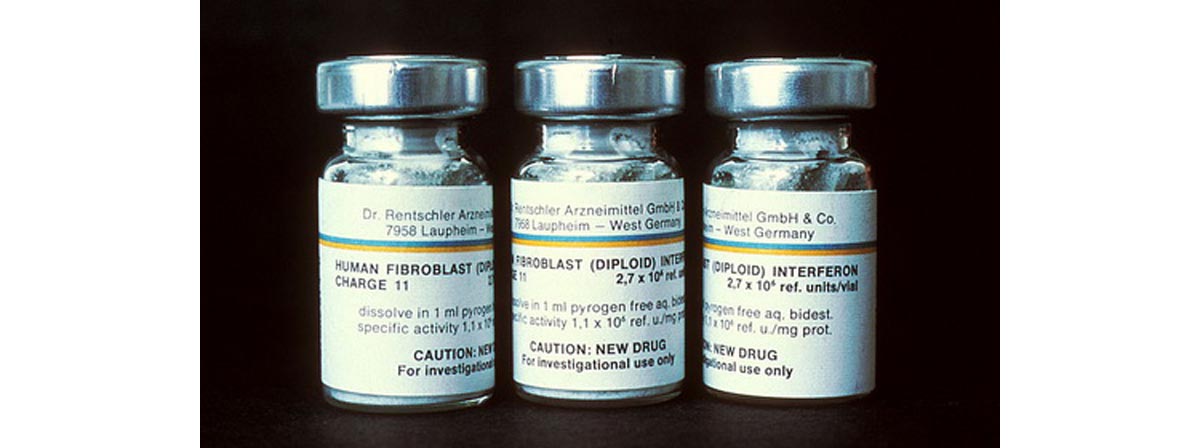Table of Contents

In instances when the disease persists, treatment with interferon for 6 months can lead to cure. However, interferon therapy is not totally reliable: some patients respond to it very well while others do not. In addition, interferon is not without side effects and sometimes these adverse effects can make the therapeutic treatment very challenging.
One of the most dangerous side effects of this therapy is the interferon alpha induced thrombocytopenia, the lowered blood platelet count.
Unpredictability of interferon therapy resulted in a need for better, more effective drugs with fewer side effects. Extensive research in this area has produced some impressive results in recent years.
Modern drugs offer cure for most cases of hepatitis C
The combination therapy is highly effective and this is corroborated by recent clinical trials. A cure rate of more than 90% has been achieved when patients are administered a combination of ribavirin, peginterferon and sofosbuvir. The latter is known to return the most promising results amongst the Direct Acting Antivirals or DAA, as they are better known. The conventional therapy for 24 – 48 weeks has now been shortened to 12 weeks when Sofosbuvir is used in combination with peginterferon and ribavirin. The drugs are relative safe and the studies indicate little or no side effects.
Combination of only two drugs, ribavirin and sofosbuvir, is used in the cases when the viral load (the amount of virus in the patient’s blood) is relatively low. In the cases of high viral load, three-drug therapy is preferred to reduce the possibility of relapse.
Chronic hepatitis C still needs better treatments
The need for less toxic and more effective anti-hepatitis C drugs has spurred the quest for identifying new compounds which would help minimize the rising mortality rates associated with chronic illness. One of the more promising breakthroughs in the pipeline is Incivek.
Incivek, or telaprevir as it is better known, works on the concept of blocking the replication of hepatitis C virus by inhibiting hepatitis C specific protein, protease NS3-4A. The drug is primarily indicated as the preferred option in post liver transplant patients with genotype I chronic hepatitis C.
While new drugs like Sofosbuvir are highly effective and possess low toxicity, the problem of complex chronic cases of hepatitis C still needs to be addressed. The treatment of patients with coexisting decompensated liver disease or cirrhosis still has to be perfected. New drugs in the pipeline might be able to address this problem and add the final nail to the coffin of hepatitis C.
- Chen SL and Morgan TR (2006) The Natural History of Hepatitis C Virus (HCV) Infection. Int J Med Sci, 3(2): 47-52
- Wise M, Biatek S, Finelli L, Bell BP & Sorvillo F (2008) Changing trends in Hepatitis C-related mortality in the United States, 1995-2004. Hepatology 47, 1128 – 1135
- Roffi L, Redaelli A, Colloredo G & Minola E (2001) Outcome of liver disease in a large cohort of histologically proven chronic Hepatitis C:influence of HCV genotype. Eur J Gastroenterol Hepatol 13(5), 501-506
- Miriam JA, Hadler SC & Judson FN (1990) Risk Factors for Acute Non – A, Non – B Hepatitis in the United States and Association with Hepatitis C Virus Infection. JAMA 264, No. 17, 2231-2235
- Jun DW, Tak WY, Bae SH & Lee YJ (2012) Recent trends in the treatment of Hepatitis C. Korean J Hepatol 18(1): 22-28
- Manns MP & Cornberg M (2013) Sofosbuvir: the final nail in the coffin for hepatitis C? The Lancet Infectious Diseases 13, issue 5, pp. 378-379
- Kathleen N Ly, Zing J, Klevens RM &Ward JW (2012) The Increasing Burden of Mortality From Viral Hepatitis in the United States Between 1999 and 2007. Annals of Internal Medicine 156(4), pp. 271-278.
- Photo by steadyhealth.com
- Photo courtesy of Linda Bartlett by Wikimedia Commons : commons.wikimedia.org/wiki/File:Interferon_bottles.jpg
- www.medsci.org/v03p0047.htm
- onlinelibrary.wiley.com/doi/10.1002/hep.22165/full
- www.ncbi.nlm.nih.gov/pubmed/11396528
- jama.jamanetwork.com/article.aspx?articleid=383789
- synapse.koreamed.org/search.php?where=aview&id=10.3350/kjhep.2012.18.1.22&code=0005KJHEP&vmode=FULL
- www.thelancet.com/journals/laninf/article/PIIS1473-3099(13)70074-4/fulltext
- annals.org/article.aspx?articleid=1169805


Your thoughts on this